Abstract
The mean half-life of dicumarol in the plasma of seven sets of identical and seven sets of fraternal twins after a single oral dose of 4 mg/kg was 43.6±SD 17.9 hr. Half-lives ranged from 7 to 74 hr in these 28 normal adults not receiving other drugs for 2 wk preceding dicumarol administration. Large differences among unrelated individuals in dicumarol half-life disappeared almost completely in identical twins, but persisted to some extent in most sets of fraternal twins. These results indicate that marked differences among subjects in dicumarol half-life are under genetic rather than environmental control. Reproducibility of values for dicumarol half-life was demonstrated. A direct relationship between the dose and the half-life of dicumarol occurred in unrelated volunteers administered progressively larger doses at 10-day intervals. Dose dependence of the half-life of a drug results in increased variability of half-life and hence in greater risks of toxicity on long-term therapy. Risks of toxicity on the one hand and of failure to anticoagulate adequately on the other can be reduced by determining dicumarol half-life before starting long-term therapy. Half-lives for dicumarol and phenylbutzone tended to be correlated in the 28 twins, but no correlation occurred between dicumarol and antipyrine half-lives.
Full text
PDF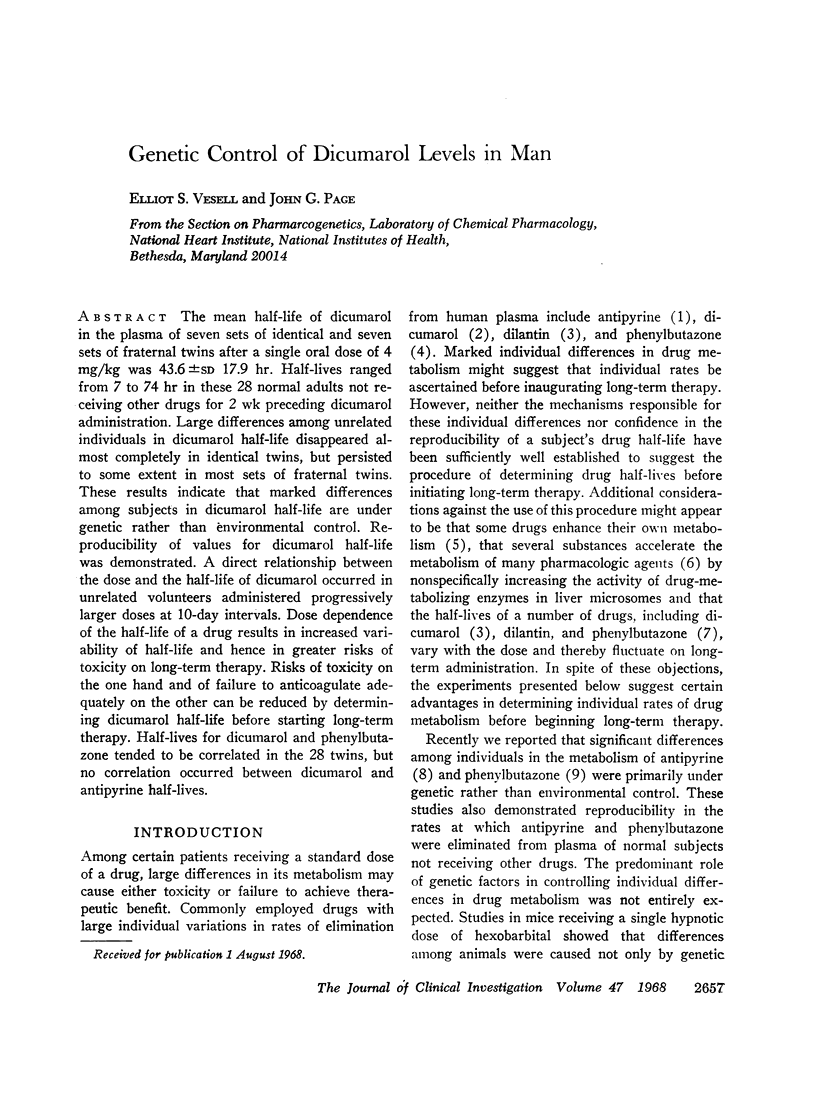
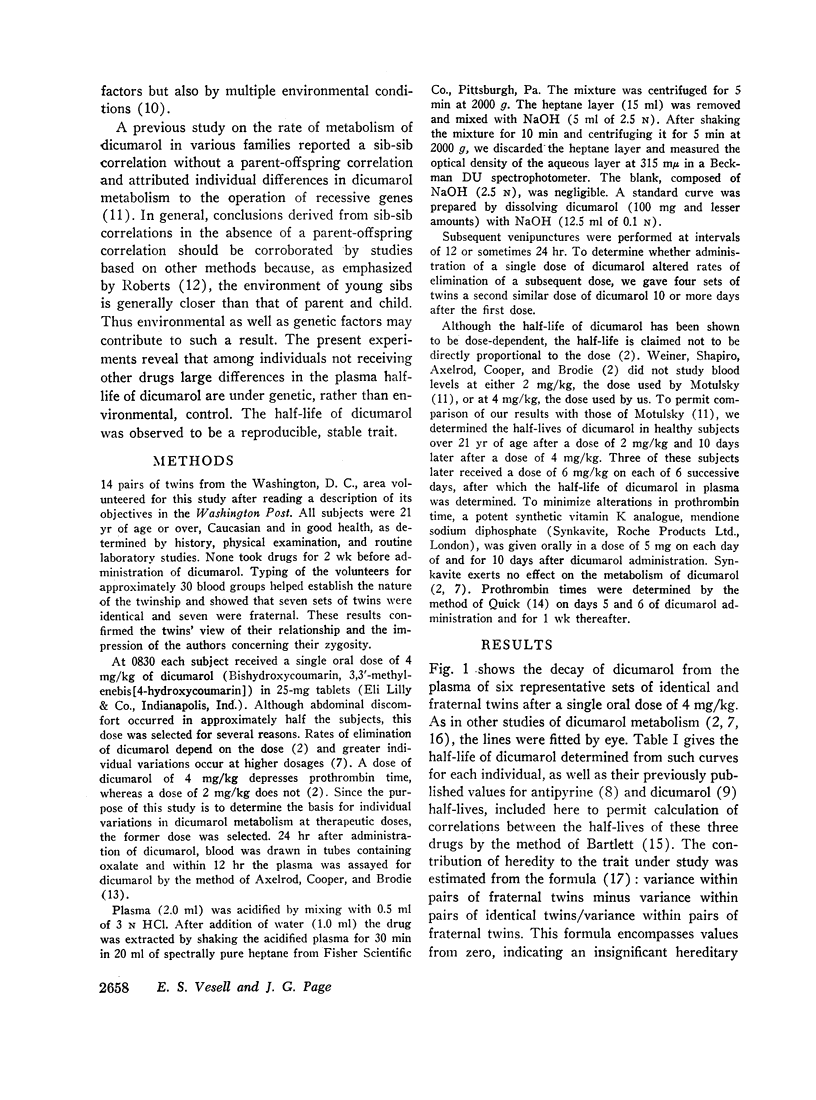
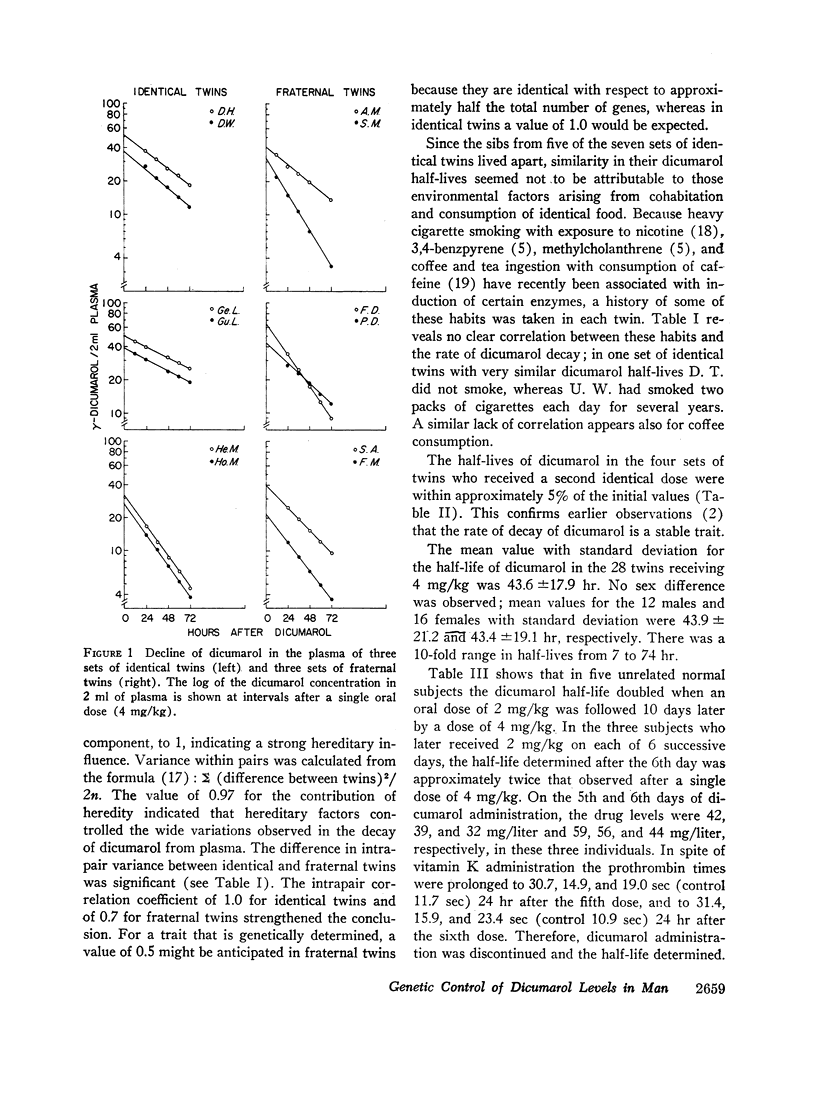
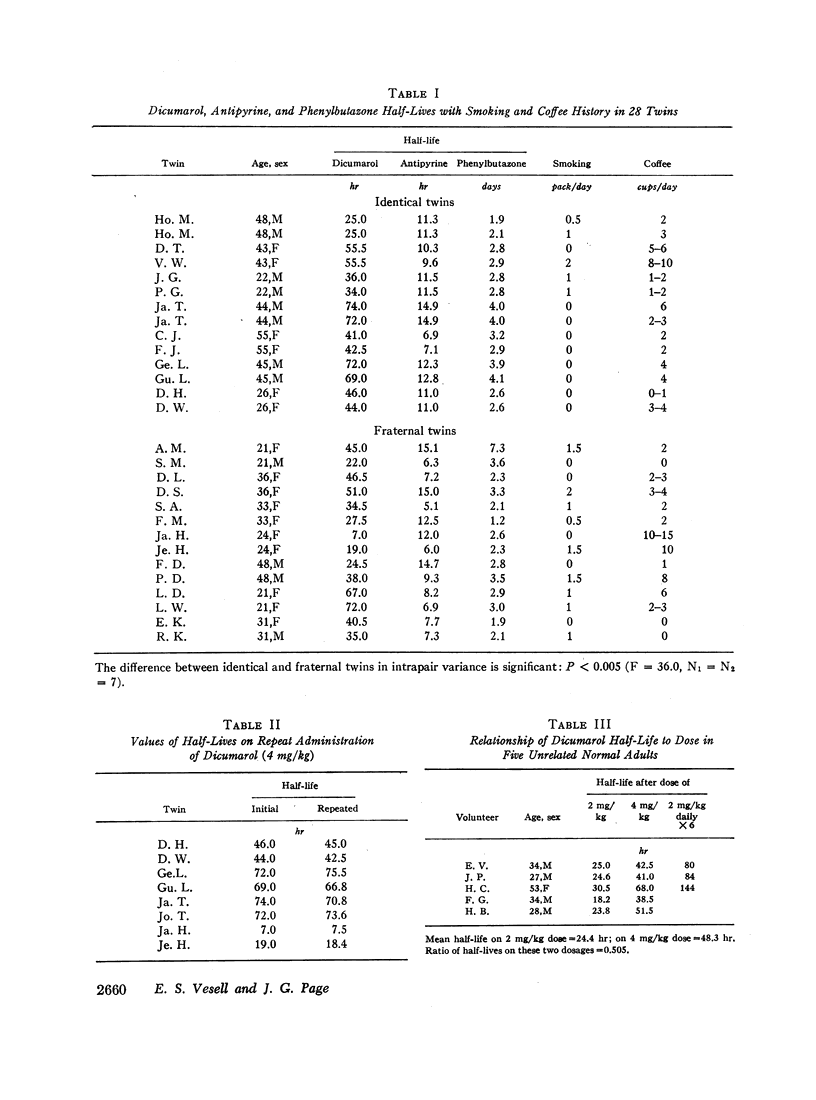
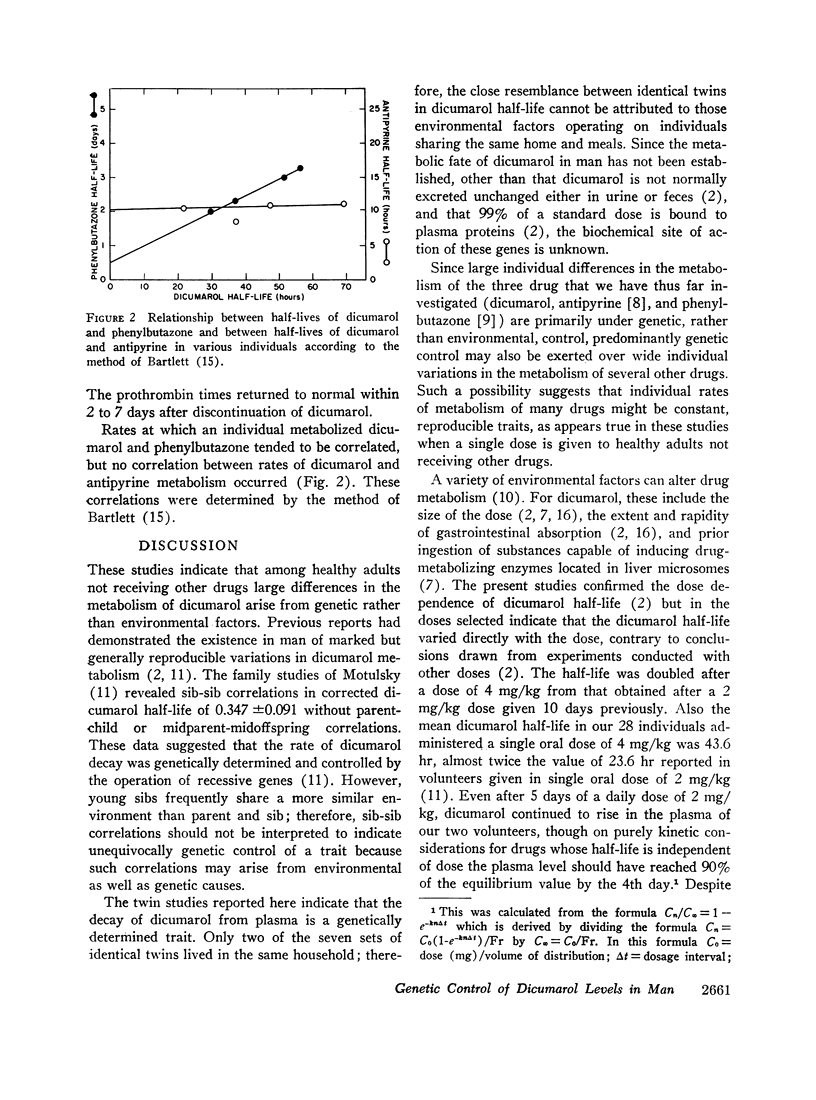
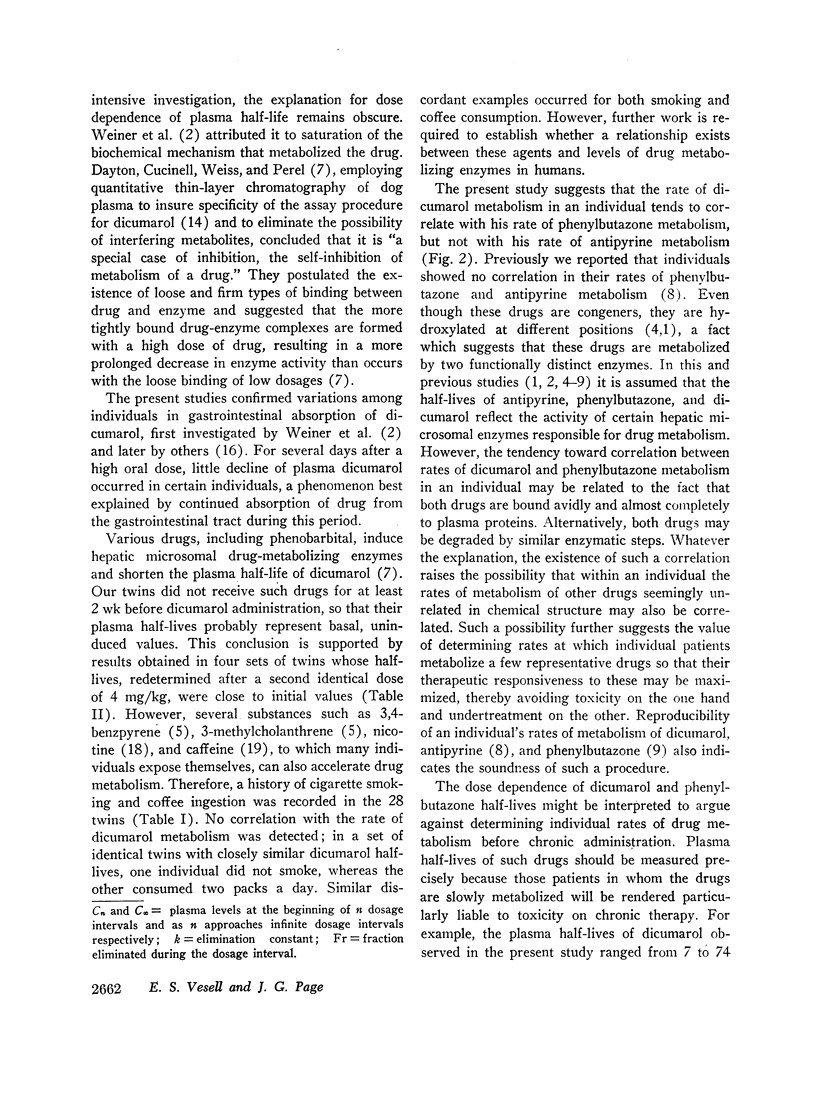
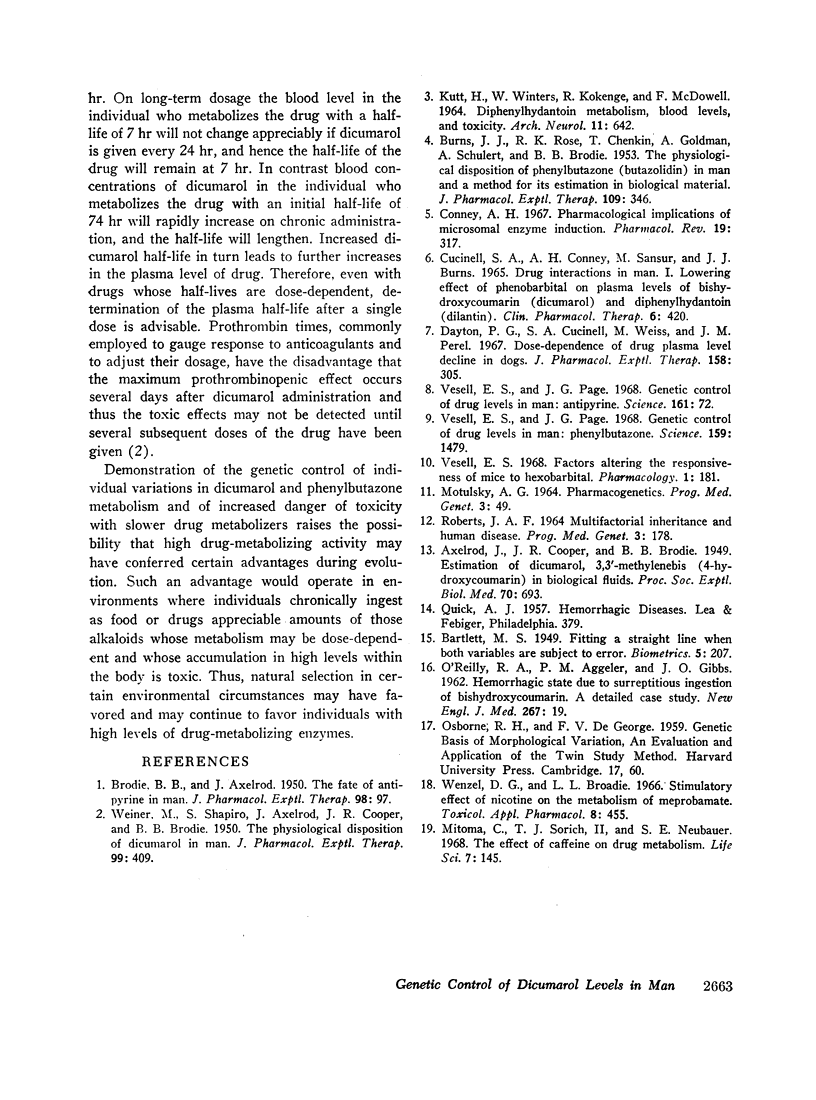
Selected References
These references are in PubMed. This may not be the complete list of references from this article.
- BRODIE B. B., AXELROD J. The fate of antipyrine in man. J Pharmacol Exp Ther. 1950 Jan;98(1):97–104. [PubMed] [Google Scholar]
- BURNS J. J., ROSE R. K., CHENKIN T., GOLDMAN A., SCHULERT A., BRODIE B. B. The physiological disposition of phenylbutazone (butazolidin) in man and a method for its estimation in biological material. J Pharmacol Exp Ther. 1953 Nov;109(3):346–357. [PubMed] [Google Scholar]
- CUCINELL S. A., CONNEY A. H., SANSUR M., BURNS J. J. DRUG INTERACTIONS IN MAN. I. LOWERING EFFECT OF PHENOBARBITAL ON PLASMA LEVELS OF BISHYDROXYCOUMARIN (DICUMAROL) AND DIPHENYLHYDANTOIN (DILANTIN). Clin Pharmacol Ther. 1965 Jul-Aug;6:420–429. doi: 10.1002/cpt196564420. [DOI] [PubMed] [Google Scholar]
- Conney A. H. Pharmacological implications of microsomal enzyme induction. Pharmacol Rev. 1967 Sep;19(3):317–366. [PubMed] [Google Scholar]
- Dayton P. G., Cucinell S. A., Weiss M., Perel J. M. Dose-dependence of drug plasma level decline in dogs. J Pharmacol Exp Ther. 1967 Nov;158(2):305–316. [PubMed] [Google Scholar]
- KUTT H., WINTERS W., KOKENGE R., MCDOWELL F. DIPHENYLHYDANTOIN METABOLISM, BLOOD LEVELS, AND TOXICITY. Arch Neurol. 1964 Dec;11:642–648. doi: 10.1001/archneur.1964.00460240074010. [DOI] [PubMed] [Google Scholar]
- MOTULSKY A. G. PHARMACOGENETICS. Prog Med Genet. 1964;23:49–74. [PubMed] [Google Scholar]
- Mitoma C., Sorich T. J., 2nd, Neubauer S. E. The effect of caffeine on drug metabolism. Life Sci. 1968 Feb 1;7(3):145–151. doi: 10.1016/0024-3205(68)90328-7. [DOI] [PubMed] [Google Scholar]
- O'REILLY R. A., AGGELER P. M., GIBBS J. O. Hemorrhagic state due to surreptitious ingestion of bishydroxycoumarin. A detailed case study. N Engl J Med. 1962 Jul 5;267:19–24. doi: 10.1056/NEJM196207052670105. [DOI] [PubMed] [Google Scholar]
- ROBERTS J. A. MULTIFACTORIAL INHERITANCE AND HUMAN DISEASE. Prog Med Genet. 1964;23:178–216. [PubMed] [Google Scholar]
- Vesell E. S., Page J. G. Genetic control of drug levels in man: antipyrine. Science. 1968 Jul 5;161(3836):72–73. doi: 10.1126/science.161.3836.72. [DOI] [PubMed] [Google Scholar]
- Vesell E. S., Page J. G. Genetic control of drug levels in man: phenylbutazone. Science. 1968 Mar 29;159(3822):1479–1480. doi: 10.1126/science.159.3822.1479. [DOI] [PubMed] [Google Scholar]
- WEINER M., SHAPIRO S., AXELROD J., COOPER J. R., BRODIE B. B. The physiological disposition of dicumarol in man. J Pharmacol Exp Ther. 1950 Aug;99(41):409–420. [PubMed] [Google Scholar]
- Wenzel D. G., Broadie L. L. Stimulatory effect of nicotine on the metabolism of meprobamate. Toxicol Appl Pharmacol. 1966 May;8(3):455–459. doi: 10.1016/0041-008x(66)90055-x. [DOI] [PubMed] [Google Scholar]


